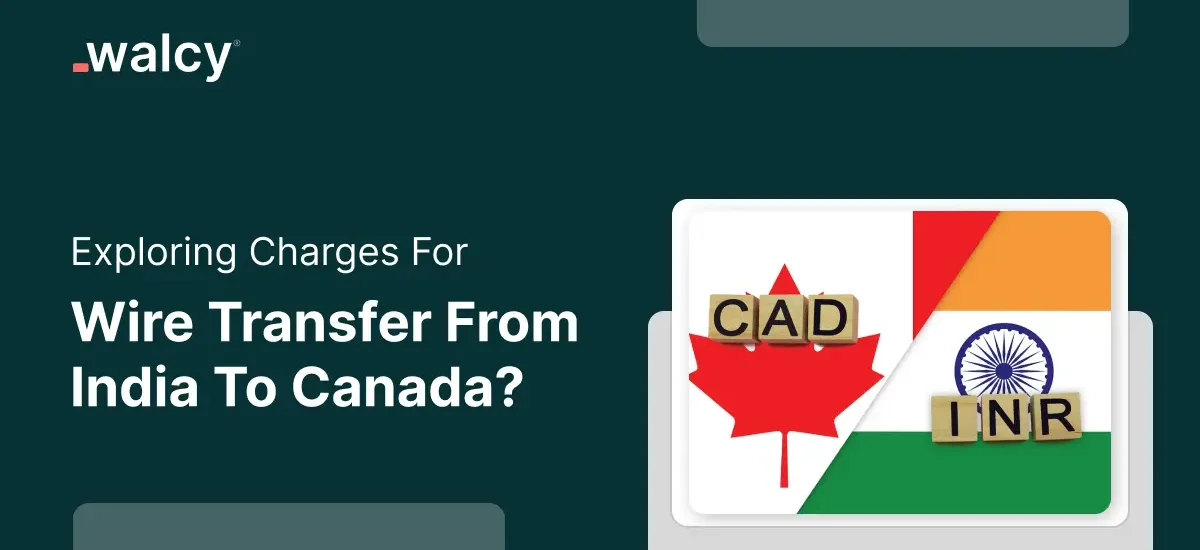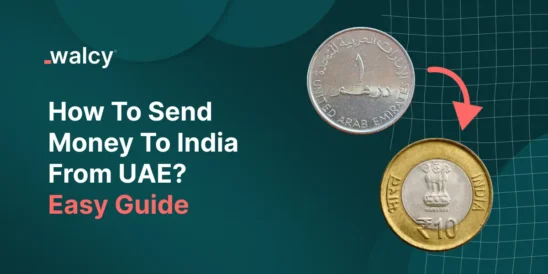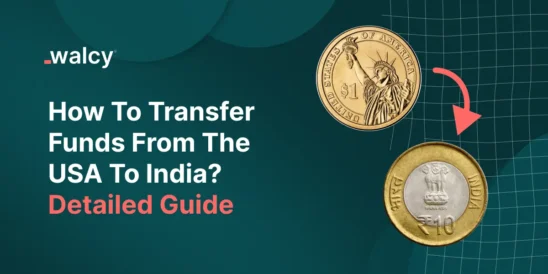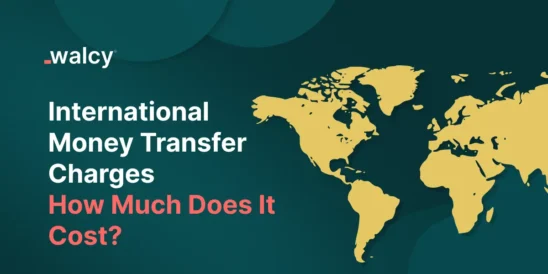Knowing the charges for wire transfer from India to Canada will help get the best deal and ensure that the person on the receiving end gets the maximum amount. Charges vary greatly with the bank or any other financial service provider. This step-by-step guide details the typical wire transfer from India to Canada charges and some tips on minimizing the costs.
Different Types Of Charges For Wire Transfer From India To Canada.
Bank Fees
Most banks in India charge a fee when sending an international wire transfer. Such fees run from INR 500 to INR 2,500 or more, depending on how much is transferred and how much a bank charges. Banks all have different fees applied. State Bank of India, ICICI Bank, HDFC Bank, and Axis Bank apply different fee schedules for international transfers. A closer look:
- State Bank of India:
SBI charges a flat fee for wire transfers to foreign nations. At the time of the most recent update, this charge was INR 500 plus applicable taxes for transactions up to USD 5,000, and an even higher charge is applicable for higher amounts.
- ICICI Bank:
ICICI Bank charges approximately INR 1,000 plus applicable taxes for any wire transfer to Canada. It will also vary on the amount to be transferred and the type of account held by the sender.
- HDFC Bank:
HDFC Bank charges about INR 500 for small amounts and a maximum of INR 2,000 for large amounts transferred. Other charges may be added to the transfer, depending upon its nature.
- Axis Bank:
Axis Bank charges INR 1,000–2,500 for international wire transfers, depending upon the amount to be transferred and the relationship of the sender with the bank.
On top of the fees that the originating or sending bank charges, the receiving bank in Canada may also charge for receiving the funds. This could be in the range of CAD 15 to CAD 30, depending upon the banks and type of account.
Exchange Rate Markup
More often than not, banks and money transfer services charge a markup on the exchange rate, thereby significantly reducing the amount that is delivered to the recipient. Most of the time, the exchange markup rate will be the percentage above the mid-market exchange rate, which is usually the rate banks or large currency exchangers trade it amongst themselves. This markup may range from anything between 1% to 3% above the mid-market exchange rate.
For example, if the interbank mid-market rate for changing INR to CAD is 0.017, the bank can quote 0.0165, including a 3% markup. This means that on a transfer of INR 1,000, the recipient in CAD would get CAD 16.50 instead of CAD 17.
If one has previously compared the rates between different providers, the effect of an exchange rate markup could be minimized. Online services, such as Wise, formerly Transfer Wise, are at the top of the scale in transparency, giving the mid-market exchange rate with only a small, crystal-clear fee attached, thus becoming very affordable against banks.
Fees of the Intermediary Bank
It may sometimes pass through one or more intermediary banks before getting into the account of the receiver. Each intermediate bank may charge a maximum fee for the transfer process, usually in the range of USD 10-30. Most of these charges will be deducted from the amount to be transferred, hence reducing the eventual amount to be received by the receiver.
These intermediary bank fees are very common when transferring to smaller banks or if the route of transfer will include several currencies. These extra fees can be avoided if one uses direct transfer services or banks that have a relationship with each other to minimize the process.
Service Provider Fees
If you are using any of these professional money transfer services; be it Western Union, MoneyGram, or online services such as Wise and PayPal—there will be specific service fees. These charges differ depending on the provider and the amount one is transferring. Here is an overview of some of the popular services available for money transfer:
- Wise:
Wise charges a small percentage of the transferred amount plus a flat fee. For instance, to transfer INR 100,000 into CAD costs about INR 1,500, together with an excellent exchange rate without any extra markups.
- Western Union:
Its charges at Western Union are based on the transfer amount, mode of payment, and delivery. For example, if sending INR 100,000 to Canada for cash pickup may require INR 2,500, a bank transfer may cost INR 1,800.
- MoneyGram:
Its fees are also in the same region as Western Union, depending on the amount transferred and the method of transfer. Online transfers via bank account are usually cheaper compared to conducting the process in person or by credit card.
- PayPal:
Typically, it will charge 2.9% of the principal amount one is transferring, then a fixed fee depending on which country the funds are being sent to. For large transfers, this percentage-based fee starts to add up.
Other Factors To Consider
In consideration of making a wire transfer from India to Canada, here are a few more factors that may influence the overall costs as well as make sure the transfer goes through seamlessly:
- Promo Rates and Discounts:
A few providers offer promotional rates or discounts to first-time users or high-value transfers. It’s worth looking at the websites of different providers for any current offers.
- Transfer Speed:
Faster transfers do come at a higher cost. If there is no urgency over the transfer, then choosing a slower transfer option can save money. For instance, Wise has a standard and express transfer option, with its standard option being cheaper but slower.
- Transfer Limits:
Some providers have minimum and maximum transfer limits. Make sure that the merchant you select can deal with the transfer amount.
- Currency Conversion Fees:
In case the transfer would involve changing INR to CAD, additional fees might be involved in currency conversion. Providers like Walcy provides the best rates
- Customer Support and Reliability:
Consider a vendor who has good customer support and reliability. You can get an idea about the service quality from the customer reviews and ratings.
You might love: How To Send Money From India To Indonesia? | How To Send Money From Canada to India? |
Comparing Different Providers
As you want the best deal for your wire transfer, you need to compare different providers in terms of fees, exchange rate, speed of transfer, and customer review. To make a proper decision, the following are the few steps that can be taken:
- Online Comparison Tools:
Websites such as Monito, Finder, and FXcompared, compare fees and exchange rates among various services of money transfer. This will give you a side-by-side comparison to know which provider gives the best overall deal.
- Provider Websites:
Many prospective providers have websites where one can log on to get more information on their fee structures, their exchange rates, and how long it will take. Some providers also have online calculators that will help work out an estimate of your transfer cost in total.
- Go Through Customer Reviews:
Places like Trust Pilot and Google Reviews can say a lot about the reliability of service and the quality offered by different providers. Look out for feedback regarding the speed of transfer, customer support, and hidden fees.
- Note the Transfer Amount and Frequency:
Providers charge differently for large transfers and frequent transfers. You might get a better deal on large transfers or regular transfers. If you are going to make repeated transfers, consider those providers who provide discounts or loyalty programs for frequent users.
Examples of Transfer Scenarios
Let us consider a few hypothetical scenarios to show the possible costs of transferring money from India to Canada:
Small Bank Transfer
A sender wants to send to a recipient’s bank account in Canada the amount of INR 50,000. The sending bank has an up-front fee for the transaction of INR 1,000, and the exchange rate markup includes another 2%. Then, there is a CAD 20 fee taken by the recipient’s bank. This is the probable cost breakup:
- Sending Bank Fee: INR 1,000
- Exchange Rate Markup: INR 1,000 (2% of INR 50,000)
- Recipient Bank Fee: CAD 20 (approximately INR 1,200)
Total cost: INR 3,200
Large Transfer Using Wise
A sender is looking to transfer INR 500,000 to a receiver’s bank account in Canada using Wise. For this transfer, Wise charges INR 7,500 along with its competitive exchange rate and no markup. The recipient’s bank applies a fee of CAD 15. This could be the potential breakup of all fees involved in this transaction:
- Wise Fee: INR 7,500
- Recipient Bank Fee: CAD 15 (∼INR 900)
Total cost: INR 8,400
Monthly Regular Transfers by Western Union
A sender aims to transfer INR 100,000 every month to a receiver in Canada via Western Union. Each transfer incurs a fee of INR 2,500; also, an exchange rate markup of 3% is added. The receiving bank charges CAD 20 each time. The total cost breakup for one transfer could be as follows:
- Western Union Fee: INR 2,500
- Exchange Rate Markup: INR 3,000 (3% of 100,000 INR)
- Recipient Bank Fee: CAD 20, which is approximately INR 1,200
Cost per transfer: INR 6,700
For a year, this will be a cost of INR 80,400 for 12 transfers.
Read about: How To Send Money From Canada to India?
Conclusion
Transferring money from India to Canada involves charges by the bank, exchange rate markups, intermediary banks, and the service provider. The major ways through which one can save on these charges for transferring money from India to Canada are by comparing providers, looking out for promotional rates and discounts, and choosing the right mix between speed and cost.
You will find the cheapest option for your needs simply by looking at online comparison tools, provider websites, and customer reviews. Whether you go for traditional banks or more specialized services for transferring money, understand the fees and exchange
Do follow us on Facebook and Linkedin, to stay connected with us.



